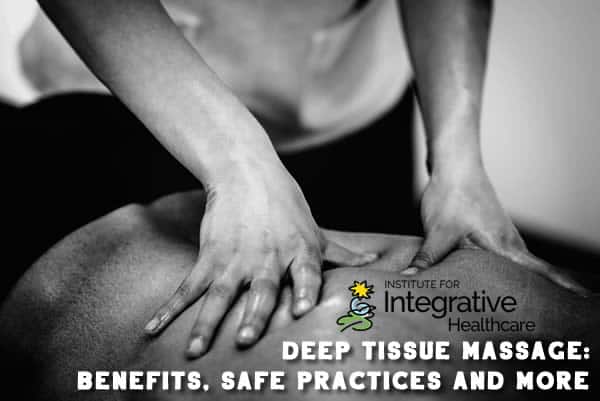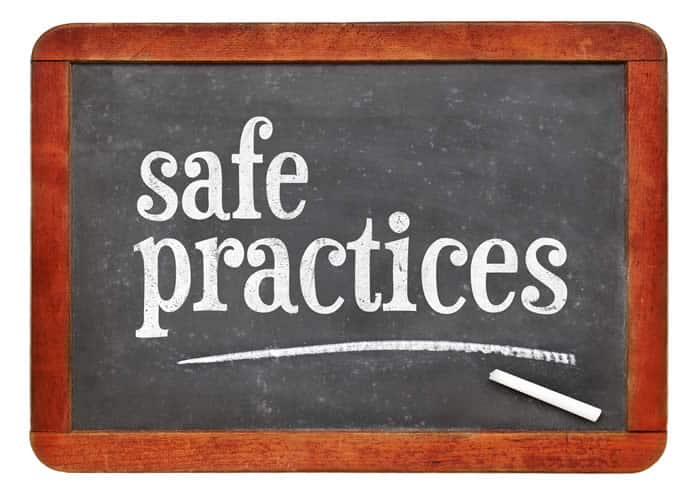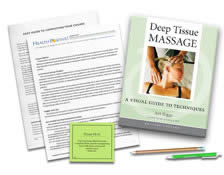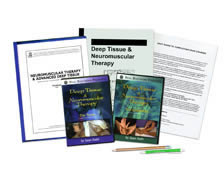

“Deep tissue massage” is a commonly used term in the massage field. As I present continuing education classes in Arizona, I am often asked how to present trainings to massage staff for the purpose of helping therapists perform deep tissue safely and effectively. Many massage therapists report injuries occurring after performing deep tissue massage extensively throughout their career.
This article will highlight:
- benefits
- safe practices
- and different interpretations of “deep tissue” massage.
Top Benefits of Deep Tissue Massage
Many clients report a preference towards receiving deep tissue sessions. There are many benefits professed by clients receiving deep tissue massage. Some clients state they can relax easier when they feel deeper pressure upon their body. Others feel great relief of pain upon deep pressure application.
Other benefits professed include:
- improved neuropathy symptoms
- better breathing
- elimination of metabolic waste
- and feeling a sense of wholeness.
Many people live a high stress lifestyle; thus, their sympathetic nervous systems are in a heightened state. With these individuals, deep tissue massage involving deep pressure application may help project them beyond the sympathetic state into parasympathetic state where relaxation can be attained.
Before proceeding, since some clients think “deep tissue” means deep pressure application, it is prudent to describe the differences between positive pressure and negative pressure upon the body.
- Positive pressure involves an application of force into body tissues. When a therapist presses their elbow into soft tissue, positive pressure is applied.
- Conversely, negative pressure involves an application of pressure to lift tissues apart. When cupping application is used to create space within skin and fascial tissues, negative pressure is applied.
Either application can facilitate the goals of “deep tissue” massage.
Safe Practices

Remember these safe practices when performing deep tissue massage sessions.
- Be sure to scan your body mechanics as you apply deep tissue massage application. Make sure your feet are securely on the ground, bend your knees, have your hips facing your stroke, keep back straight, and avoid bending your head too far forward.
- Power with massage strokes comes through your legs and core. Avoid pushing too hard with your arms. Do not rely on hand and thumb strength. Our fingers were meant to be dexterous allowing for fine, quick movements rather than strong, forceful movements.
- Use the client’s breathing to help you apply pressure safely. An adage I present in class is “a client lets you in when they breathe out.” With your tool (hand, soft fist, forearm, elbow, etc.) upon the client’s body, hold pressure steady upon client’s inhale, then press deeper into their body upon their exhale.
Some clients think deep tissue massage application needs to legitimately hurt their body. Their thinking stems from believing that if muscle is injured, it will regenerate stronger. This is akin to how people interpret gains acquired in a gym setting where muscle gets “torn down and rebuilds bigger and stronger.” It is an ethical consideration to avoid causing pain within the client’s body. Causing pain will initiate the sympathetic response, thus taking client out of a healing space mentally and physically.
Noticing Nonverbal Signs
It is important to determine the edge of pressure application in which massage application may “hurt so good” yet not cross a pain threshold. The phrase “hurts so good” is subjective; be sure to communicate with the client what this phrase means in their mind. The client’s body is indicating pressure is too deep if you notice nonverbal signs such as a client holding their breath, flinching body away, muscles become rigid or clenching their fists, toes or teeth. Even if a client states aloud the pressure feels fine, massage therapists need to consider the body’s cues over the client’s verbal cues in such instances.
Deep Tissue Massage Addresses Muscle Attachment Sites
Another manner of understanding “deep tissue” massage comes from addressing muscle attachment sites at bony landmarks. There are many specialized techniques such as Trigger Point Therapy and Neuromuscular Therapy which specifically target muscle attachment sites. Freeing tension within the tendon units attaching muscles to bones may facilitate relief of pain and restore range of motion of a body region.
Traditionally, cross fiber friction has been presented in entry level schools as the main technique to use at muscle attachment sites. Current massage research confirms the efficacy of friction strokes in alleviating pain and dysfunction but does not limit to strictly cross fiber technique. For example, a 2014 study in the publication Integrative Medicine, a Clinician’s Journal reported positive results with deep friction massage in the treatment of radiation induced fibrosis. Practitioners in this study utilized many types of friction stroke applications. (1)
A healthy perspective is to recognize massage therapy does NOT have to be dually classified as either “relaxation” versus “therapeutic.” This dichotomy presumes these two terms are mutually exclusive. I have witnessed this disconnect in conversations with peers and students in entry level education. This conversation leads many entry level massage students to graduate school thinking therapists and modalities are either relaxing or therapeutic but cannot be both.
In actuality, relaxation may be the most therapeutic benefit of massage therapy. Sedating the sympathetic nervous system and inducing the parasympathetic nervous system can create healthy changes within the entire body. All organs and body systems may function more efficiently within a calmer internal environment. Moving towards an inclusive perspective that relaxation equates to therapeutic massage will help a massage therapist recognize how relaxation restores equanimity within the client’s body, no matter which modality or “deep tissue” manner is employed.














